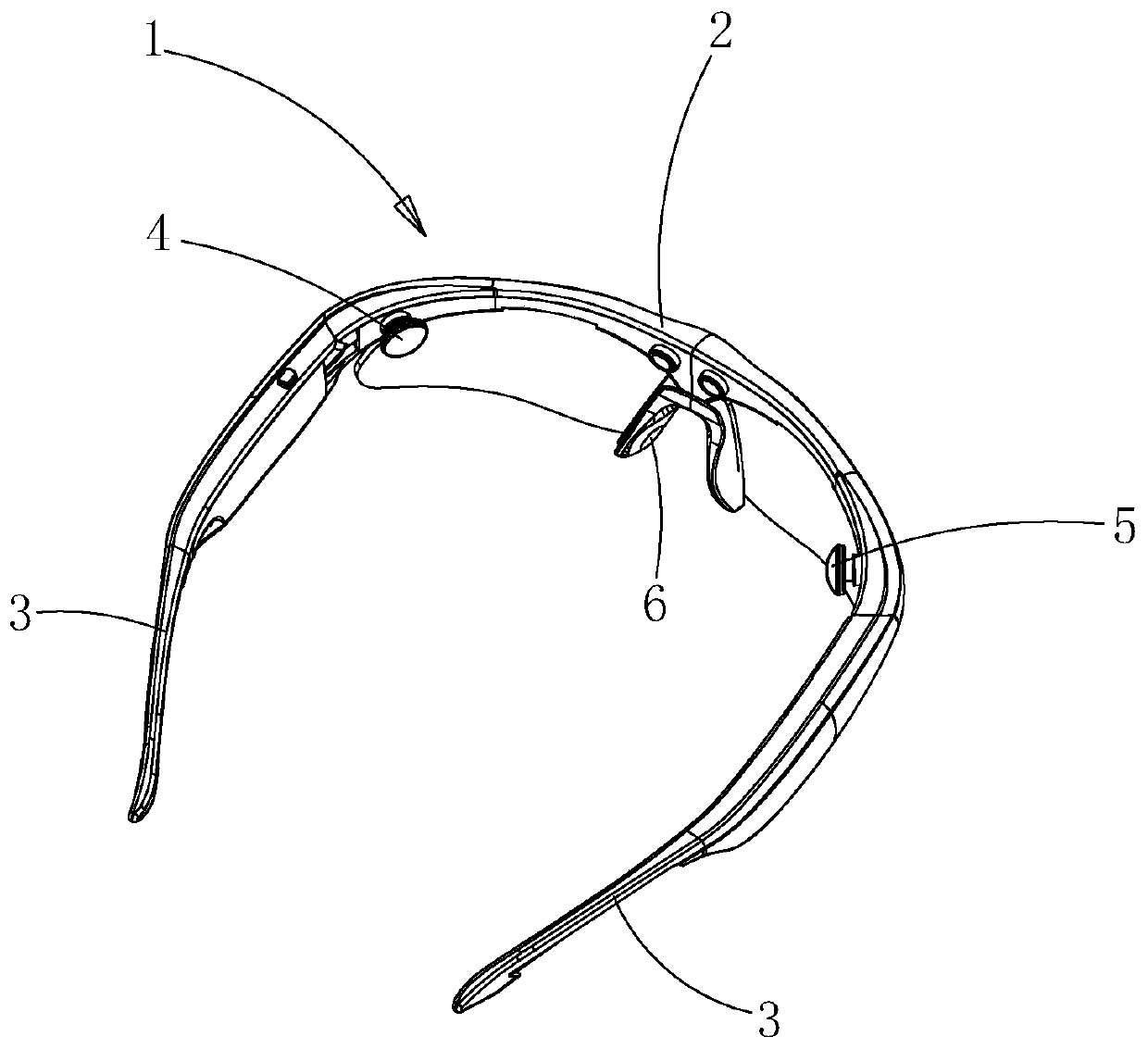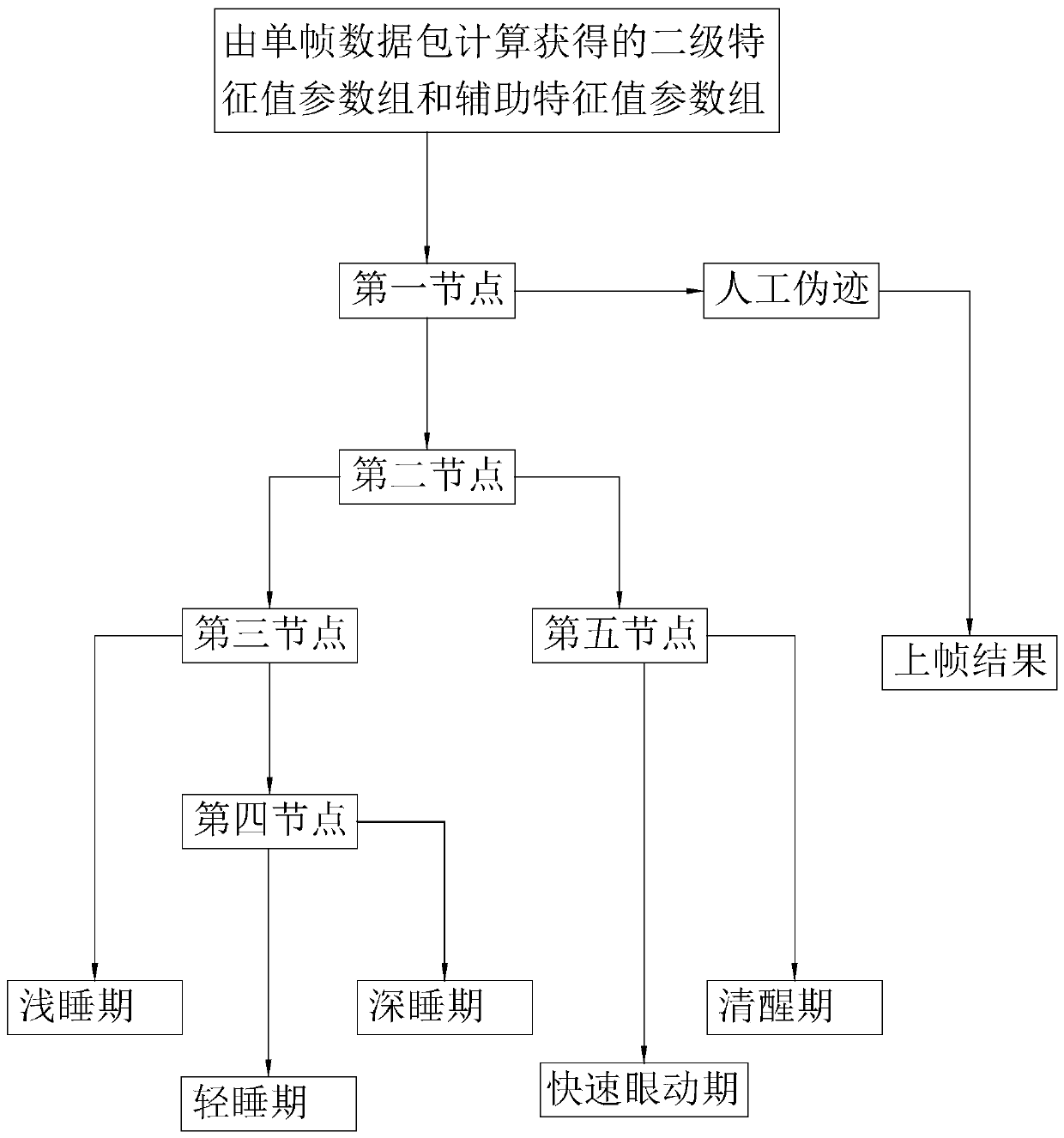Sleep monitoring system with good energy saving effect
A technology for sleep monitoring and energy-saving effects, applied in the field of sleep monitoring systems, can solve problems such as increased charging maintenance frequency, shortened operating time, sensitive multi-lead paste, etc., to improve data accuracy, improve judgment efficiency, and facilitate wear and use Effect
- Summary
- Abstract
- Description
- Claims
- Application Information
AI Technical Summary
Problems solved by technology
Method used
Image
Examples
Embodiment 1
[0054] This embodiment provides a sleep monitoring system with good energy saving effect.
[0055] A sleep monitoring system with good energy saving effect includes a basic data collector and a processor. The basic data collector acquires basic data through portable wearable devices; the processor receives the data from the basic data collector and obtains the user's sleep status through calculation. When running, the processor obtains single-frame data packets through the basic data collector in a frequency conversion acquisition mode, and sequentially calculates and obtains the real-time sleep state of the user, and the processor calculates the working state parameters of the basic data collector according to the sleep state of the user. Make adjustments so that the system has differentiated energy consumption when monitoring each sleep state of the user.
[0056] The working state parameters of the basic data collector will be adjusted according to the user's real-time sle...
Embodiment 2
[0103] Compared with the first embodiment, this embodiment provides another decision tree structure.
[0104] At the first node, the threshold value Num-LCZ-Threshold is set. When Num-LCZ>Num-LCZ-Threshold, the single-frame data packet is judged as an artificial artifact, and is output by the processor for processing. The sleep state is obtained when a single frame data packet is obtained, otherwise, it is transferred to the second node. When artifacts appear, the number of times the waveform crosses the x-axis in each waveform graph will increase significantly. By comparing the value of the parameter Num-LCZ with the corresponding threshold Num-LCZ-Threshold, it is determined whether artifacts are generated, specifically , when Num-LCZ>Num-LCZ-Threshold, the single-frame data packet is judged as an artifact, the single-frame data packet is invalidated, and the sleep state obtained when the last single-frame data packet is sent out, otherwise, Then there is no artificial arti...
Embodiment 3
[0106] Compared with the first embodiment, this embodiment provides another decision tree structure.
[0107] At the second node, set the threshold value BVS-Threshold, when BVS>BVS-Threshold, turn to the fifth node, otherwise, turn to the third node. When BVS>BVS-Threshold, it means that the Beta wave signal has a stronger proportion in the amplitude of the single frame data packet, indicating that the user's brain is active and is in the rapid eye movement or awake period. On the contrary, it means that the amplitude ratio of the Beta wave signal in the single frame data packet is weaker, indicating that the user's brain thinking is not active and the sleep state is in the light sleep period, light sleep period or deep sleep period.
PUM
 Login to View More
Login to View More Abstract
Description
Claims
Application Information
 Login to View More
Login to View More - R&D
- Intellectual Property
- Life Sciences
- Materials
- Tech Scout
- Unparalleled Data Quality
- Higher Quality Content
- 60% Fewer Hallucinations
Browse by: Latest US Patents, China's latest patents, Technical Efficacy Thesaurus, Application Domain, Technology Topic, Popular Technical Reports.
© 2025 PatSnap. All rights reserved.Legal|Privacy policy|Modern Slavery Act Transparency Statement|Sitemap|About US| Contact US: help@patsnap.com



